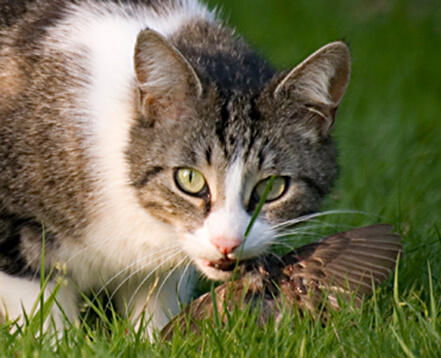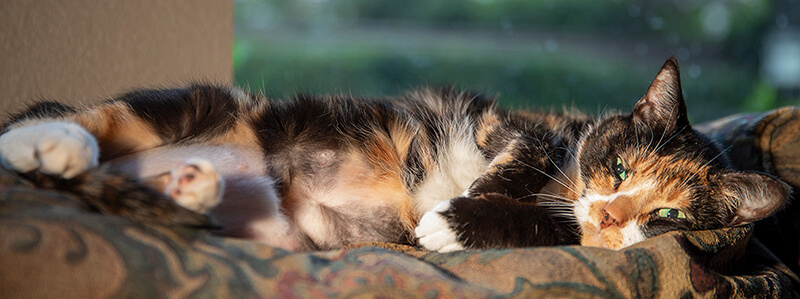CATS PREYING ON WILDLIFE: NATURAL OR NOT?
by Rosemary Jann
Free-roaming cats are a common sight in our suburban neighborhoods, but the toll they take on native wildlife often remains invisible. According to a 2013 study sponsored by the Smithsonian and the Fish and Wildlife Service, domestic cats (many of them feral) kill an estimated 2.4 billion birds and 12.3 billion small mammals yearly. These numbers do not include prey that may escape with injuries that later prove fatal, nor do they take into account diminished breeding in birds threatened by cats. As the New York Times summed it up, “that cuddly kitty is deadlier than you think.”

Photo by Gaëtan Priour courtesy American Bird Conservancy.
JUSTIFIED BEHAVIOR

Allowing pet cats outdoors is often justified as supporting “natural” feline behavior. It is true that cats have evolved as hunters and carnivores: their instinct to stalk, trap, and kill is hard-wired and is not controlled by hunger. But from an environmental point of view, predation by pet cats operates under distinctly unnatural conditions. House cats are in effect “subsidized predators,” protected by their owners from factors that would control their population numbers in the wild: disease, starvation, and being hunted by other animals. This disrupts the natural equilibrium between prey and predator, with disastrous results for local wildlife.
INDOOR CATS CAN BE HAPPY
Keeping pet cats indoors serves the best interests of cats, birds, and small mammals. Indoor cats live longer and healthier lives than their outdoor counterparts and can be equally content with some help from their owners. The Ohio State University’s Indoor Pet Initiative offers valuable advice about addressing cats’ needs. Window perches and screened enclosures can give house cats a safe taste of the outside world. Owners can satisfy cats’ natural instinct to hunt with toys chosen to model their pet’s preference for particular kinds of prey.
Birds and other wildlife face many stresses in our suburban environment. Keeping cats indoors can play a significant role in reducing them.
Many thanks to Rosemary Jann, Virginia Master Naturalist and indoor cat owner, for allowing choosenatives.org to post her article.

